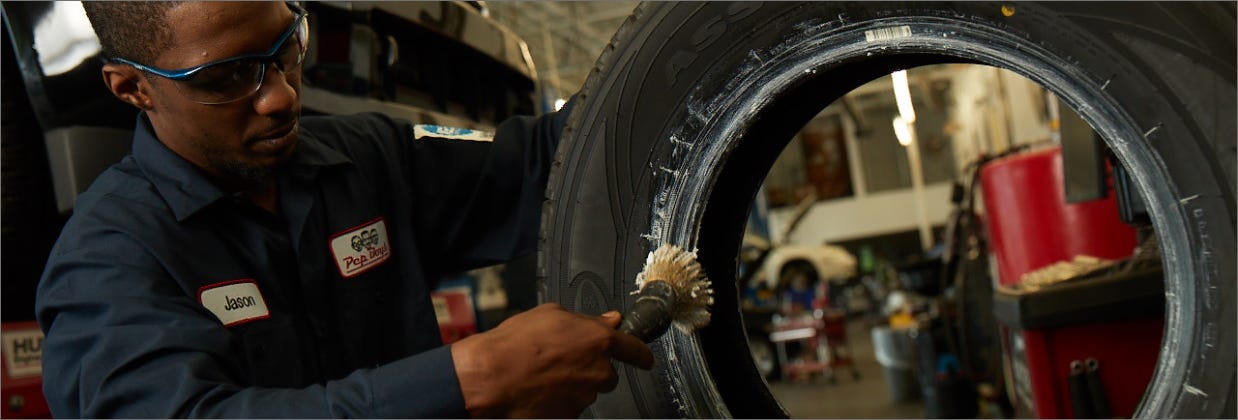Tire Solution: The Influence of Weather
When it concerns ensuring optimum performance and security when traveling, understanding the impact of climate condition on tire service is crucial. From scorching warmth to icy roadways, each weather condition component can dramatically influence tire functionality and general driving experience. By delving into the effects of varying weather on tires, chauffeurs can gain useful insights that might improve their car's performance and durability. In this discussion, we will certainly check out the complex relationship between climate condition and tire service, losing light on the value of weather-specific tire maintenance methods and factors to consider.
Heat and Tire Performance
When exposed to high temperatures, tires experience modifications in performance that can substantially impact vehicle safety and handling. The heat generated from long term driving or warm weather conditions causes the tire rubber to soften, leading to lowered walk life and boosted wear.

Winter Results
Cold climate conditions can have a significant effect on tire efficiency and security. As temperature levels drop, tire rubber can solidify, resulting in reduced grip on icy or snow-covered roads. In winter, tires may additionally shed atmospheric pressure extra quickly, which can impact dealing with and gas effectiveness. In addition, cool temperature levels can cause tire sidewalls to tense, enhancing the threat of damage from potholes or various other road dangers.
To minimize the results of cool weather condition on tires, it is important to on a regular basis inspect tire stress and inflate them to the maker's suggested degrees. Utilizing wintertime or all-season tires created for winter problems can likewise enhance grip and grasp on icy or snowy roads. Appropriate tire upkeep, consisting of normal assessments for wear and damages, comes to be even more important throughout cooler months to make sure optimum efficiency and security.
Rainy Issues Influence
During rainy problems, tire performance and safety and security can be substantially affected by the damp road surface areas and decreased exposure. The walk pattern of tires plays a critical duty in keeping grip on wet roadways. Tires with worn-out footsteps are a lot more prone to hydroplaning, where a layer of water develops in between the tire and the roadway surface area, leading to loss of traction. To fight this, chauffeurs should on a regular basis examine their tires for appropriate step depth and think about buying tires particularly developed for damp problems.
Moreover, wet climate can likewise decrease exposure, making it challenging for drivers to see the road ahead plainly (GMC Tire Service). In such conditions, it is vital to adjust driving rates appropriately and preserve a secure complying with distance to permit for abrupt quits. click here to find out more Properly filled with air tires can likewise aid in preserving control on wet roads by supplying far better handling and grip
Snow and Tire Safety And Security
Snow-covered roadways pose special challenges for motorists, emphasizing the significance of correct tire selection and maintenance. When driving in snowy problems, having the ideal tires can make a significant difference in safety and security and performance. Wintertime tires are developed with special rubber substances and tread patterns to supply far better traction on snow and ice contrasted to all-season tires. The much deeper footsteps and sipes of winter months tires assist hold the roadway better, decreasing the danger of sliding and gliding.

Moreover, vehicle drivers must take into consideration installing tire chains in severe snowy problems. Tire chains provide additional traction by clutching the snow and ice, boosting security and control. It is vital to comply with maker guidelines when installing and utilizing tire chains to stop damage to the tires and automobile (GMC Tire Service). By selecting the right tires, maintaining proper inflation, and considering additional traction help like tire chains, drivers can boost their safety when browsing snow-covered roadways.
Weather-Related Tire Maintenance
Weather-related tire maintenance incorporates a range of methods aimed at ensuring ideal tire feature and durability in various climate situations. One vital facet of weather-related tire maintenance is tire pressure regulation. Inspecting tire step frequently and changing tires when step wear gets to a particular depth is vital for maintaining traction and stability in adverse weather condition.
Conclusion
In conclusion, climate condition have a significant effect on tire performance and security. From heat impacting tire stress and wear to cool weather decreasing grip, it is vital to consider the weather condition when maintaining and utilizing tires. Stormy conditions can reduce hold and bring about hydroplaning, while snow can enhance the threat of crashes if tires are not properly outfitted. Weather-related tire maintenance is crucial in guaranteeing ideal efficiency and safety and security when traveling.
In this discussion, we will go right here certainly check out the complex partnership between weather conditions and tire solution, shedding light on the importance of weather-specific tire upkeep practices and considerations.
